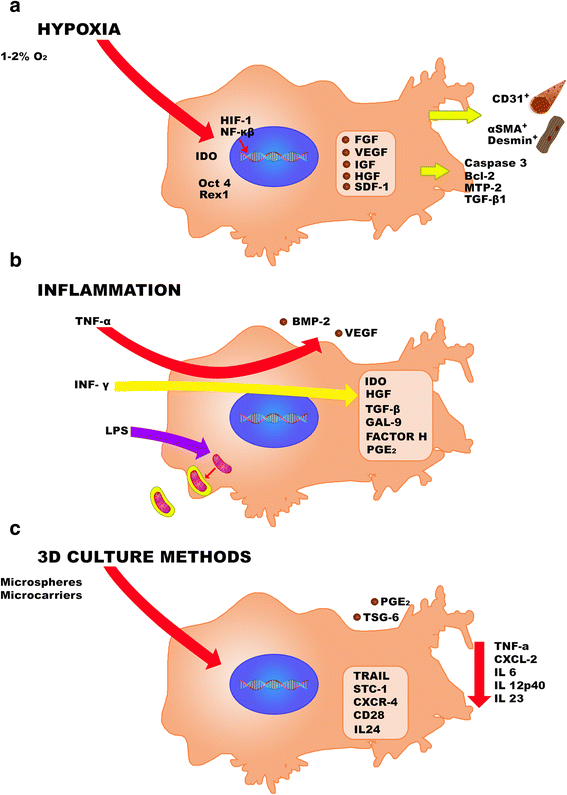A review of therapeutic effects of mesenchymal stem cell secretions and induction of secretory modification by different culture methods
- PMID: 25304688
- PMCID: PMC4197270
- DOI: 10.1186/s12967-014-0260-8
A review of therapeutic effects of mesenchymal stem cell secretions and induction of secretory modification by different culture methods
Abstract
The mesenchymal stem cell (MSC) is being broadly studied in clinical trials. Contrary to the early paradigm of cell replacement and differentiation as a therapeutic mechanism of action, evidence is mounting that the secretions of the cells are responsible for their therapeutic effects. These secretions include molecules and extracellular vesicles that have both local and distant effects. This review summarizes the up- and down-regulation of MSC anti-inflammatory, immune modulating, anti-tumor, and regenerative secretions resulting from different stimuli including: a) hypoxia, which increases the production of growth factors and anti-inflammatory molecules; b) pro-inflammatory stimuli that induce the secretion of immune modulating and anti-inflammatory factors; and c) 3 dimensional growth which up regulates the production of anti-cancer factors and anti-inflammatory molecules compared to monolayer culture. Finally we review in detail the most important factors present in conditioned medium of MSC that can be considered protagonists of MSC physiological effects including HGF, TGF-b, VEGF, TSG-6, PGE2 and galectins 1, and 9. We conclude that there is potential for the development of acellular therapeutic interventions for autoimmune, inflammatory, and malignant diseases and tissue regeneration from cellular secretions derived from MSCs cultured under the appropriate conditions.
Figures

References
Publication types
MeSH terms
Substances
LinkOut - more resources
Full Text Sources
Other Literature Sources
Medical
Miscellaneous

